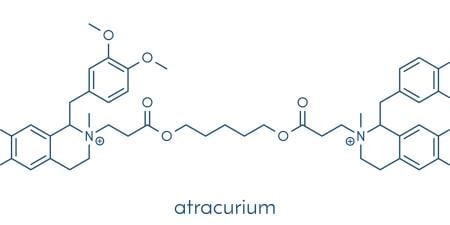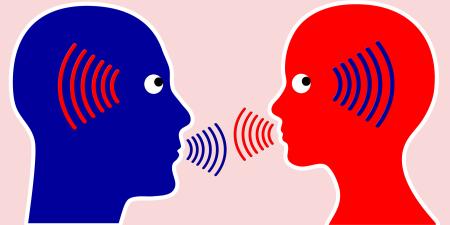Case
With six years of experience under his belt, Dr. Richards was hired as an anesthesiologist at a small private hospital. His first patient, Mr. Jarvis, was scheduled to undergo surgical resection of an abdominal tumor. Dr. Richards interviewed Mr. Jarvis and went over his record with him, discovering that his patient was 64 years old and had chronic hypertension. The attending surgeon, Dr. Palmatti, was a well-respected general and endocrine surgeon with over 30 years’ experience and the chief executive officer of the largest surgical group in the city. About an hour into the case, Dr. Palmatti instructed Dr. Richards to administer a fluid bolus and electrolytes.
Dr. Richards politely explained that the patient’s urine output, intraoperative fluid management, blood loss, and arterial blood gas measurement all suggested that his fluids and electrolytes were in balance, so he recommended not administering fluid and electrolytes at this time.
Dr. Palmatti remarked that, in his experience as a surgeon, he had “never had an anesthesiologist display such blatant disregard for authority.”
A nervous Dr. Richards responded, “While fluid administration in this patient would not likely have any significant negative consequence, Mr. Jarvis’s numbers clearly suggest that fluids are not necessary. I feel as though there is slightly more room for harm than good.”
Clearly irritated, Dr. Palmatti turned to Dr. Richards and asks, “Oh, you ‘feel as though,’ do you? And what exactly entitles you to question my 35 years of experience?”
Dr. Richards reassessed the patient’s volume status and intraoperative fluid loss and considered what effect his refusal might have on his and the hospital’s other anesthesiologists’ standing with the surgeon and whether the risk of adverse effects was sufficiently minimal to permit administering unnecessary fluids.
Commentary
Too often, we may be inclined to trivialize, ignore, or retaliate for physician behaviors that strike at the heart of patient care by disrupting appropriate communication among members of the medical team, rather than addressing them. Reporting bullying behavior may be interpreted as showing weakness or an inability to hold one’s ground in what amounts to an interpersonal power struggle. Failure to win the contest or to cope with harassment in some admirably cunning or decisive way may be seen to reflect adversely on the abused physician, his or her partners, or the specialty as a whole. And retaliation is a formula that is not only entirely unprofessional but also highly unlikely ultimately to succeed. Dysfunctional responses to bullying can place the patient in direct danger because they corrupt the professional fabric of the perioperative team.
Dysfunctional Behavior in the Medical Team
In this clinical scenario, two types of dysfunctional physician behavior can be identified. One type is abusive behavior, which can be verbal (insults; condescension; or unwarranted attacks on the honesty, integrity, or competence of another) or physical (contact that is embarrassing, threatening, intimidating, or injurious and invades another’s physical or psychological space) [1]. The other type is disruptive behavior, which alters clinical care in a way that is either not beneficial or actually harmful to the patient. Mean, abusive, and disruptive (MAD) behavior among medical professionals interferes with the cooperation, teamwork, and communication necessary to fulfill the obligation of physicians to put the patient’s interests foremost. Dr. Palmetti’s behavior exhibited both abusive elements (“What exactly entitles you to question my 35 years of experience?”) and disruptive elements (Dr. Richards is about to alter patient care because of it).
MAD behavior among physicians is unethical [2] but distressingly common. In a 2004 survey, physician executives indicated that physician behavior caused problems within their institutions three to five times per year [3]. Nearly 95 percent reported that disrespect, refusal to complete tasks, yelling, and insults occurred on a regular basis among the physicians they supervised and more than 70 percent stated that behavior problems in their organizations nearly always involved the same physicians [3].
In another study of disruptive physicians, general surgeons were the most frequently identified by respondents as exhibiting disruptive behavior (26 percent), followed by neurosurgeons (20 percent), cardiac surgeons (13 percent), and orthopedic surgeons (10 percent) [4]. When the same authors presented a similar survey to staff at another institution, more than 67 percent of respondents reported thinking that MAD behavior sometimes, frequently, or constantly led to adverse events, with 71 percent of those indicating that medical errors had occurred and 51 percent of them citing reduced patient safety [4]. Another set of interviews of surgical team members identified increased errors and diminished patient safety as a major problem resulting from MAD behavior among surgeons in the perioperative setting [1].
However, the problem of MAD behavior is prevalent among anesthesiologists as well [5]. Almost half of respondents were aware of an adverse event that could have resulted from disruptive behavior in the perioperative setting and 62 percent indicated that the impact on patient outcomes could have been serious, very serious, or extremely serious [5].
Personality Disorders and Chronic MAD Behavior
Chronic MAD behavior is frequently part of a personality disorder that reflects a person’s innate character and is not merely an exaggerated response to immediate environmental conditions. In one study of 39 physicians referred to a program for disruptive behavior, approximately 40 percent had abnormal personality profiles as measured by the Minnesota Multiphasic Personality Inventory-2 [6]. People with these profiles often lack insight and emotional intelligence. Such traits are not generally amenable to psychotherapy [7, 8]. Management of such personalities requires setting strict rules of acceptable behavior and then imposing real and significant penalties for transgressions [7]. Physicians must assume that repeated episodes of MAD behavior will occur and that appropriate behavioral norms will have to be repeatedly reinforced.
Addressing MAD Behavior
The medical profession has been slow to respond to MAD behaviors with real sanctions. This may in part be due to the historic perception of medicine as a virtue-based profession and of its members as having achieved entry into the profession partly by being intrinsically virtuous or deserving in some way. MAD behavior is a “trivial problem” for such a person, who is engaged in a higher goal. And yet disrespect for others and poor self-control, which are core elements of MAD behavior, are completely contrary to the core aims of the ethical practice of medicine. Recognizing that such behavior increases the likelihood of medical errors and fosters interpersonal interactions that undermine patient care, the Joint Commission called in 2008 for MAD behavior to be treated as a “Sentinel Event Alert.” Such behavior poses danger to patients by fostering an atmosphere in which medical errors become more likely and interpersonal interactions erode the primary goal of putting the patients’ welfare foremost [9].
Today’s ideal health care team is a heterogeneous group of people with a variety of personalities, motivations, backgrounds, genders, and value systems who represent different professions, each with their own knowledge and contributions to patient care. Although in the past, the surgeon was considered the captain of this team, that concept no longer holds ethically, medically, or even legally; the “captain of the ship” doctrine has been thrust aside [10].
Today, health care professionals work as members of a team, all charged with delivering high-quality care within their specialties and in cooperation with others. Yet disagreements, alternative perspectives, and tensions are bound to occur in any such team. When handled civilly, they should even be welcomed because they may bring new and potentially critical knowledge and strategies to bear on the problem at hand. Behaving civilly according to this definition does not merely mean being “polite” or “mannerly.” Civility refers to an entire array of behaviors, perceptions, and attitudes that reinforce social norms, foster the kind of interpersonal trust that creates robust and complementary relationships in a cooperative community, and enable disparate individuals to set and reach common goals [7]. Abusive and disruptive behaviors erode this ability, the very core of a well-functioning health care team. The physician who responds to uncivil behavior in kind furthers the disintegration of the team.
Dealing effectively with MAD behavior is no easy task and requires concerted efforts on the part of individuals, departments, hospitals, and health care systems to support and reinforce actions that minimize its occurrence. Accrediting bodies now require that every patient care system have effective policies and procedures in place to investigate and quell abusive and disruptive behavior [9]. The process of managing MAD behavior has two essential parts: correcting the culture, policies, and procedures that promote it and corralling individuals who exhibit it.
The first step in system change is educating staff about the danger that MAD behavior poses to patients and establishing procedures that allow MAD behavior to be successfully dealt with. Procedures for bringing such behavior to the attention of the medical staff leadership should be simple and easily accessible. Those who bring such complaints must be free of fear of retaliation. Investigation must be prompt, carried out by a neutral party, and follow prescribed procedures and policies. All parties must be afforded respect and due process.
Once an occurrence of abusive or disruptive behavior has been confirmed, efforts to curb the behavior should begin on a collegial level first, involving medical leadership within the practice or department and then institutional medical leadership if necessary. Counseling (e.g., anger management therapy) to make behavioral compliance possible may be recommended, bearing in mind that the goal of such therapy is to compel behavioral compliance, not to promote psychological insight—which is usually beyond the capabilities of the personality who chronically engages in such behaviors.
Ultimately, the authority of regulatory agencies may be needed to quell the behavior: most state licensure agencies and many professional credentialing boards regard unprofessional conduct as cause for withdrawing the physician’s license, board certification, or both, but the bar for such conduct may be set quite high—e.g., physical abuse, addiction, dishonesty, or a felony conviction [11].
How should Dr. Richards respond in the situation described? Immediate responses to MAD behavior must take into account the context and location of the interaction and the relative risks of immediate confrontation. Patient care and safety are first and foremost. Is the surgeon’s demand merely an aggravation? Or is it likely to promote an adverse patient outcome? Engaging in a nearly pointless argument while performing critical patient care duties in the operating room certainly poses much higher risks to the patient than the administration of fluids, which, while perhaps unnecessary, is unlikely to lead to any serious complication. If, on the other hand, Dr. Richards believes that carrying out Dr. Palmetti’s demands would endanger the patient, he should not do so. In that case, as a “junior” attending physician, he might consider requesting support from other colleagues in the operating room to reinforce his position.
In this case scenario, Dr. Richards respectfully communicated objective evidence that the treatment Dr. Palmatti demanded was unnecessary. Unfortunately, Dr. Palmatti chose not to supply an equally or more compelling rational argument but simply to insult and intimidate Dr. Richards. As galling as it may be, at this point the most ethical thing for Dr. Richards to do is to administer the fluids and plan to confront the surgeon’s behavior outside of the operating room setting at a more appropriate time.
After the surgery, a civil approach would generally require the anesthesiologist to talk in a collegial way with the surgeon about uncivil behavior and why it poses a problem in the operating room. But in the case scenario above, there is clearly already an unequal relationship between the anesthesiologist and surgeon—the surgeon is older, more established in practice, and has more clinical experience. Depending on the response he expects from the surgeon, Dr. Richards may choose to approach the anesthesiology service chief or chair instead. If these efforts fail, the issue should be addressed according to the policies and procedures of the hospital system involved—often by making a report to the administration regarding the behavior and asking for an investigation. Management of the behavior will generally entail setting strict behavioral requirements for the physician and continually monitoring his or her progress.
Controlling abusive behavior is an unpleasant task, but under no circumstances should it go unaddressed. In the patient care arena, appropriate staff behavior is essential to the ethical goals of medical care. Ultimately, if MAD behavior cannot be controlled, the interests of patient safety require that the physician be removed from patient care.
References
- Cochran A, Elder WB. Effects of disruptive surgeon behavior in the operating room. Am J Surg. 2014;209(1):65-70.
-
2018;
American Medical Association. Opinion 9.045 Physicians with disruptive behavior. Code of Medical Ethics. http://www.ama-assn.org/ama/pub/physician-resources/medical-ethics/code-medical-ethics/opinion9045.page. Accessed Dec 11, 2014.
- Weber DO. Poll results: doctors’ disruptive behavior disturbs physician leaders. Physician Exec. 2004;30(5):6-14.
- Rosenstein AH, O’Daniel M. A survey of the impact of disruptive behaviors and communication defects on patient safety. Jt Comm J Qual Patient Saf. 2008;34(8):464-471.
- Rosenstein AH, O’Daniel M. Impact and implications of disruptive behavior in the perioperative arena. J Am Coll Surg. 2006;203(1):96-105.
- Roback HB, Strassberg D, Iannelli RJ, Finlayson AJR, Blanco M, Neufield M. Problematic physicians: a comparison of personality profiles by offence type. Can J Psychiatry. 2007;52(5):315-322.
-
Jackson S. The abusive and disruptive physician. In: Van Norman G, Jackson S, Rosenbaum S, Palmer S, eds. Clinical Ethics in Anesthesiology: A Case-Based Textbook. Cambridge, UK: Cambridge University Press; 2010:235-239.
- McCracken J, Hicks R. Personality traits of a disruptive physician. Physician Exec. 2012;38(5):66-68.
-
Behaviors that undermine a culture of safety. Sentinel Event Alert. 2008;40:1-3.
- Murphy EK. “Captain of the ship” doctrine continues to take on water. AORN J. 2001;74(4):525-528.
-
Carson D, Thompson JN. The role of state medical boards. Virtual Mentor. 2005;7(4). http://virtualmentor.ama-assn.org/2005/04/pfor1-0504.html. Accessed January 23, 2015.



